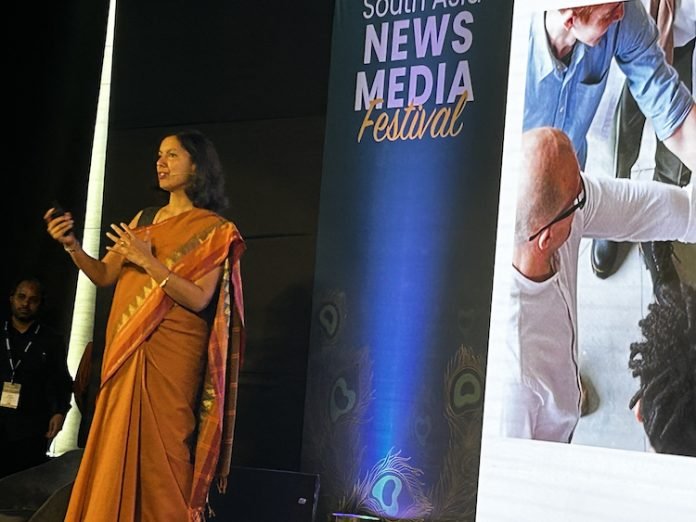
How do you describe the recent Inma festival in New Delhi – the four-day in-person event after several years, which again included visits to leading media houses and agencies around the capital of the world’s largest democracy and two days of conferencing that I was privileged to attend. The conference was packed with information, experience, and performances that were interesting and occasionally fascinating. Most of all there were good people, media owners, publishers, technologists, editors, journalists, and even influencers.
It is unlikely that any presentation or knowledge or even several taken together can alleviate the business of media transformation and growth. Instances, insights, suggestions, and ideas can be taken away but it isn’t easy to write about the event. It was one of those – you had to be there to experience it to individually extract the juice you need to bring you back to the next one – hopefully better off having tried out some of the suggestions, than in the quandary in which you arrived this time.
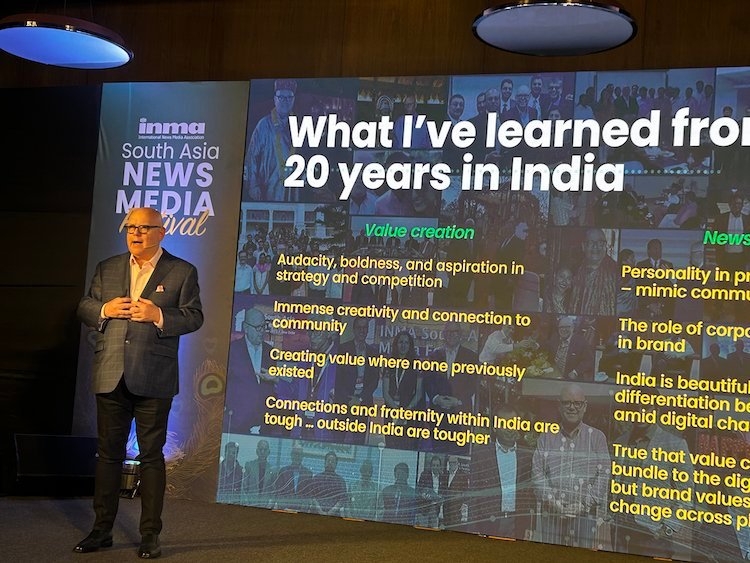
Photo IPP
There were some great presentations – Earl the Pearl Wilkinson’s recounting of 20 years of crisscrossing the subcontinent and having learned as much or more than he could help or teach. In the end, admiring the chaos that we are, the energy of our chaos, the energy of an industry that could be the lifeblood of political democracy, social development, and entertainment in a country with much headroom for growth. In a way, Wilkinson was merely contrasting the energy of a social experiment in a large country with a growing economy that has its share of absurdity but does not yet display the ennui of post-industrial societies.
The singularity of Daniel Hulme
It was good fun to attend the Inma conference – a hugely enjoyable festival of media addicts, owners, and technologists – it was a groupware event. There was a magic show too. Daniel Hulme was able to convince, explain, or justify all the concepts, theories, tools, practices, advantages, necessities, and ethics of artificial intelligence in a single presentation, after which he vanished.
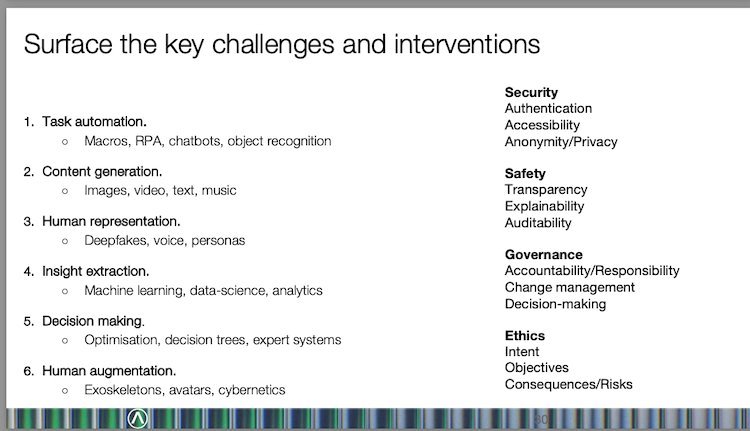
All of us media junkies were too awestruck by the 30-minute Ted talk to ask if he was being disingenuous in his suggestion if not assertion, that AI will or may lead us not to dystopia, but to the utopia of singularities in every human and technological concern. Hulme described it as the “Pestle of singularities in our political, environmental, social, technological, economic and legal realms.” Not all of the singularities are palatable, but with intelligent automation, we arrive at a future of “purpose and vision,” no longer driven by the need to acquire wealth. In the words of Captain Picard of the spaceship Enterprise, “We work to better ourselves and the rest of humanity.”
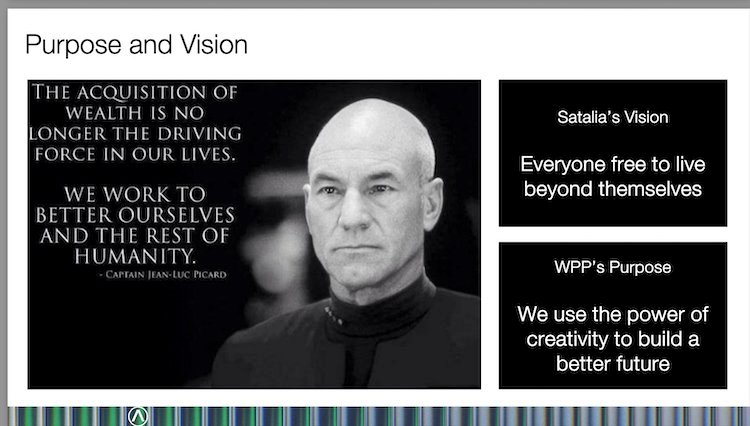
Slide Daniel Hulme at INMA New Delhi 2024
Beyond the disingenuous ethics of AI, Hulme’s magical mystery tour of the subject was an instant, condensed, and comprehensive education – a non-trivial feat of mass transcendence if not mass hysteria. It effectively brought to attention that most if not all humans are poor at crunching the data that is essential for decision-making and resource allocation – this is where AI will help with automation. It will turn data into insight and action. And it may leave some aspects of what is presently known as information, knowledge, understanding, and wisdom to us.
I was looking forward to meeting Hulme at the evening cocktail but in a way, it is better that he didn’t show up. In his presentation, he did mention at least two books that sound interesting for those who aspire to shed the mantle of media junkies and are trying to crack the mystery and mystique of AI. These are The Technological Singularity by Murray Shanahan and The Economic Singularity – Artificial intelligence and the death of Capitalism by Calum Chace.
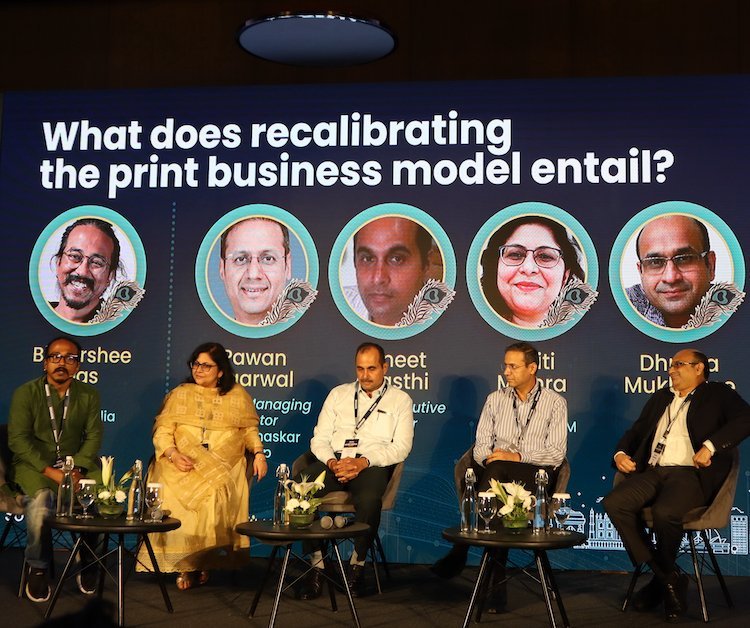
The creator economy is acknowledged
There were several other wonderful presentations at Inma this year. I particularly enjoyed Bharat Gupta’s opening presentation, because, for the first time, I heard an Indian media business owner who was not in denial about what is now called the ‘creator economy’ describing it as one of the three great disruptions that Indian news media faces – the others being in his view, the direct to consumer brands, and AI+ML in the newsroom. This is a rare bit of honesty from the media owner and publisher side, admitting that they have lost significant credibility and been largely overtaken by individuals, and small and alternate groups of media purveyors using digital platforms.
Another interesting insight or question was presented by Inma’s Greg Pichoata – that there is a profound and hopefully profitable difference between information and journalism. He began with a story about his family’s visit to a spice market in old Delhi. In visits to various spice markets, he said, they were re-familiarizing themselves with flavors they were already accustomed to and discovering spices they weren’t aware of.
“What can we learn from selling commodities from the spice traders of old Delhi?” Piechota asked. “In theory, commodities are all the same. The news is a commodity but journalism is not.” Not only are individuals building news platforms but non-media companies are developing dedicated media platforms, he said. “There are now more creators than there are professional media people out there.” And as Bharat Gupta acknowledged, in India they are garnering a significant portion of the digital ad revenues.
Piechota asserted that journalism remains the key differentiator against commoditization and technology companies. “One of the main questions and concerns is whether or not consumers know what journalism is. An ethical journalistic pursuit is worth paying for and paying to.” The argument could also be made in my view, that Indian news publishers too need to know what journalism is, and whether it is worth paying for.
Save media from AI and save media through AI
Puneet Gupt’s excellent presentation of media technology using AI at Times Internet brought great confidence to the conference participants. Titled ‘Save Media from AI and Save Media Through AI, he presented several opportunities that the media has for improving its curation, targeting, revenue generation, and repurposing content using AI tools.
“There is a time to buy and a time to build,” he said, admitting that his group has a weakness for in-house construction. At the same time all the AI tools are available and open source, he said, advising and encouraging the industry and the healthy contingent of developers from media companies in the room to make the leap in the several areas that are in front of their eyes. The implication is that we do not appreciate the media and human resource assets that we already have and that media and AI are made for each other – a match made in heaven.
This is just a sampling and one dimension of what went on over the two days. If you were not there you missed it. It’s a groupware experience and one has to enjoy the Inma in-person experience every year, if possible. There are familiar and unfamiliar faces each year, a milieu of those for whom media is not just a living but an intellectual and business challenge – a work in progress still – worth saving and adapting and innovating. Of trying to take on evolving audiences and a technology that is partly an adversary threatening to destroy it. And partly an inevitability that has to be understood and turned into an advantage to accomplish the mission at hand.
















